Inside The New York Botanical Garden
Gardening Tips
Posted in Gardening Tips, Learning Experiences on September 29 2008, by Sonia Uyterhoeven
Divide and Conquer
 Sonia Uyterhoeven is Gardener for Public Education at The New York Botanical Garden.
Sonia Uyterhoeven is Gardener for Public Education at The New York Botanical Garden.
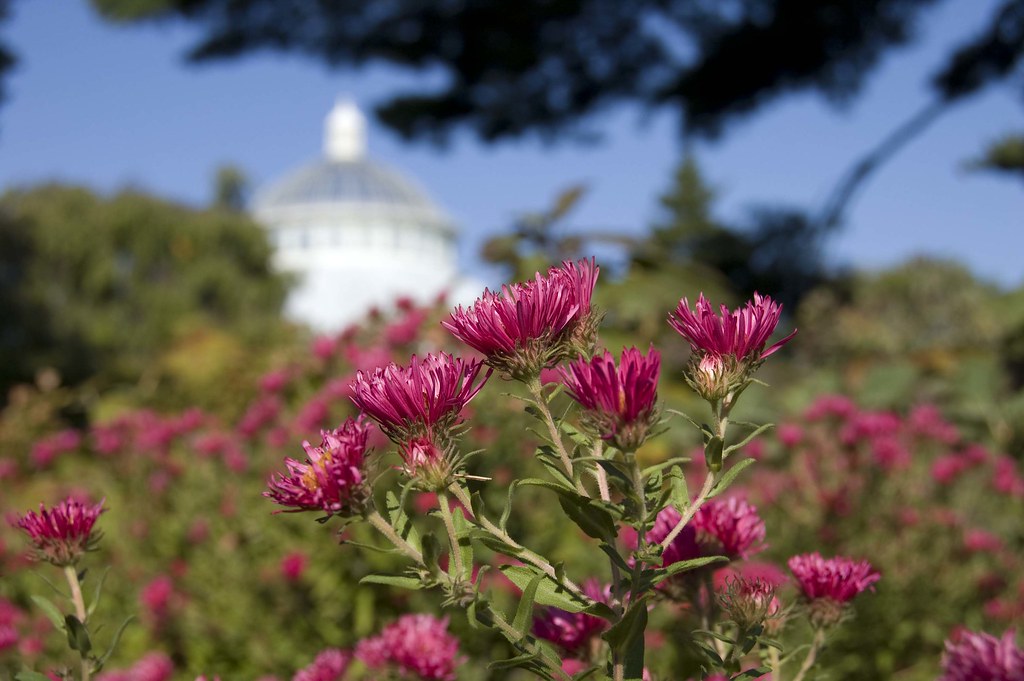 From time to time, some of your perennials will start to languish. It’s not the heat or a lack of moisture that is the cause. Sometimes they just outgrow their space, start to sprawl all over the place, and slowly die out in the middle. When this happens, it is time to divide your perennials.
From time to time, some of your perennials will start to languish. It’s not the heat or a lack of moisture that is the cause. Sometimes they just outgrow their space, start to sprawl all over the place, and slowly die out in the middle. When this happens, it is time to divide your perennials.
The general rule of thumb is to divide spring flowering perennials either immediately after flowering or in the fall, and to divide fall flowering perennials in the spring.
When you dig up the perennial be generous with the size of the root ball so that you get a good amount of roots. Garden forks often work better than spades since they do not slice through the roots.
If you are dividing in the fall, cut back the foliage to six inches—this will make it easier to see what you are doing and will help redirect the energy of the plant back into root growth. Water the perennial a day or two before you divide it to make digging easier and to make sure the plant won’t be stressed. Make your divisions large enough: A minimum of a quart-size pot is a good standard size.
Divide clumping plants such as astilbe (Astilbe), hosta (Hosta), ornamental grasses, or daylilies (Hemerocallis), with the double fork method or by slicing through them with a spade. For spreading plants such as lamb’s ears (Stachys), asters (Aster), and bee balm (Monarda), pull them apart by hand or sever with a knife or spade.
Posted in Gardening Tips on September 22 2008, by Sonia Uyterhoeven
Just Ask About Asters
 Sonia Uyterhoeven is Gardener for Public Education at The New York Botanical Garden.
Sonia Uyterhoeven is Gardener for Public Education at The New York Botanical Garden.
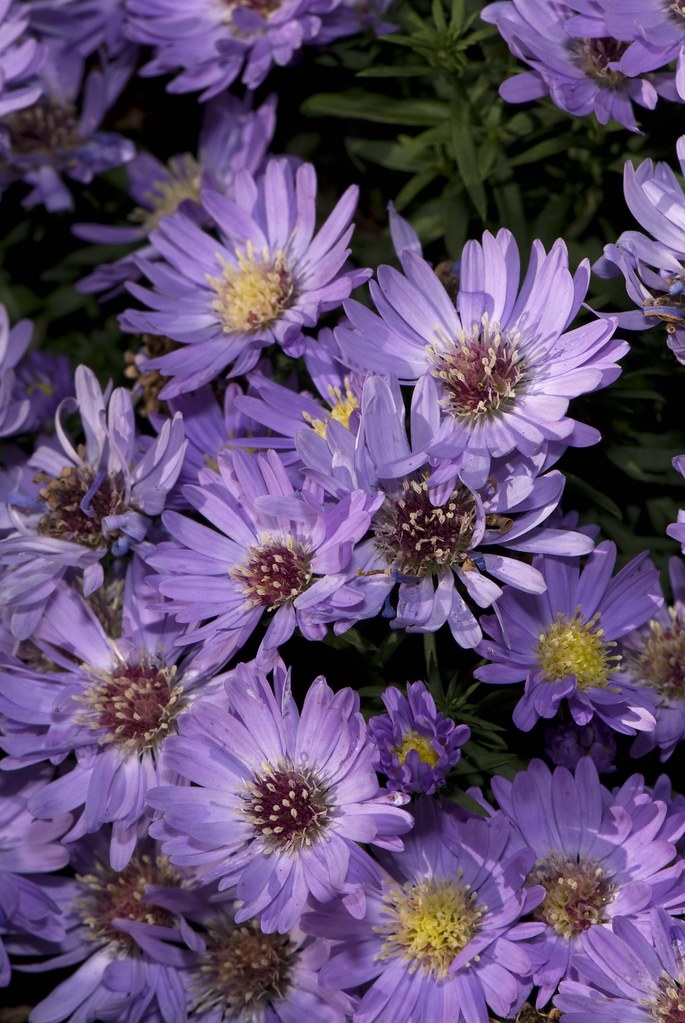 Autumn is incomplete without asters. Ornamental grasses look bare if they are not adorned by these starry creatures. Chrysanthemums and goldenrod (Solidago) look friendless without asters by their side.
Autumn is incomplete without asters. Ornamental grasses look bare if they are not adorned by these starry creatures. Chrysanthemums and goldenrod (Solidago) look friendless without asters by their side.
There are plenty of good asters on the market. One of the best for this area is Aster ‘Little Carlow’. This aster is a hybrid between Aster cordifolius and Aster novi-belgii. It has a stunning blue ray flower with yellow disks and maintains a nice compact form.
Two other good blues are Aster oblongifolius ‘October Skies’ or Aster oblongifolius ‘Raydon’s Favorite’. ‘October Skies’ is the shorter, bushier, and bluer of the two; either is worth a try in the garden.
Asters make excellent cut flowers and are attractive to butterflies. Grow them in full sun in average to dry soil.
Posted in Gardening Tips on September 15 2008, by Sonia Uyterhoeven
Crazy for Conifers
 Sonia Uyterhoeven is Gardener for Public Education at The New York Botanical Garden.
Sonia Uyterhoeven is Gardener for Public Education at The New York Botanical Garden.
 Conifers provide stately backdrops throughout the year for the garden. In the fall they are particularly spectacular as backdrops for the fireworks of fall colors. While many of them are imposing specimens, there are many fine dwarf conifers that are ideal for perennial borders and more confined spaces.
Conifers provide stately backdrops throughout the year for the garden. In the fall they are particularly spectacular as backdrops for the fireworks of fall colors. While many of them are imposing specimens, there are many fine dwarf conifers that are ideal for perennial borders and more confined spaces.
One of the most stunning examples of a dwarf conifer is the dwarf blue Colorado spruce, Picea pungens ‘R.H. Montgomery’. This is a slow-growing, compact specimen with beautiful glaucous blue needles.
If you would like a golden accent in your garden, try Chamaecyparis pisifera ‘Filifera Aurea Nana’. This Dwarf Sawara-cypress will develop into a three-foot mound.
If green is your color, the Hinoki False Cypress, Chamaecyparis obtusa ‘Nana Gracilis’, is a popular choice. It starts its life as a mound and then develops into a nice upright shape, reaching from three to five feet tall after 10 years. This little conifer can take full sun to part shade.
Posted in Gardening Tips on September 8 2008, by Sonia Uyterhoeven
Late-Season Fragrance
 Sonia Uyterhoeven is Gardener for Public Education at The New York Botanical Garden.
Sonia Uyterhoeven is Gardener for Public Education at The New York Botanical Garden.
 As you stroll through the Home Gardening Center you will find that some of the plants tickle your nose: Both foliage and flowers can be fragrant.
As you stroll through the Home Gardening Center you will find that some of the plants tickle your nose: Both foliage and flowers can be fragrant.
In the new Sensory Garden you will find the foliage of the anise hyssop (Agastache ‘Blue Fortune’) is delectable. Attractive to humans, its strong fragrance repels deer.
Continue your journey around the garden and you will find a number of wonderfully fragrant hostas in full bloom. Hostas? Fragrant? Hosta plantaginea is the old faithful for fragrance and has been around for years. A newer introduction, such as the tempting Hosta ‘Guacamole’, has beautiful variegated foliage in chartreuse and green as well as an enchanting fragrance. If that makes you too hungry and you’re a purist for aroma try Hosta ‘Fragrant Bouquet’ or Hosta ‘So Sweet’.
One of my favorite late-season fragrance comes from the awkwardly named bugbane (Actaea aka Cimicifuga). The full beauty of Actaea ‘James Compton’ is on display in the White Country Garden. This late-season perennial has rich burgundy foliage and spires of white flowers that unfurl in early September to produce a sweet perfume that will knock you off your feet.
Posted in Gardening Tips on September 2 2008, by Sonia Uyterhoeven
Extending Your Harvest
 Sonia Uyterhoeven is Gardener for Public Education at The New York Botanical Garden.
Sonia Uyterhoeven is Gardener for Public Education at The New York Botanical Garden.
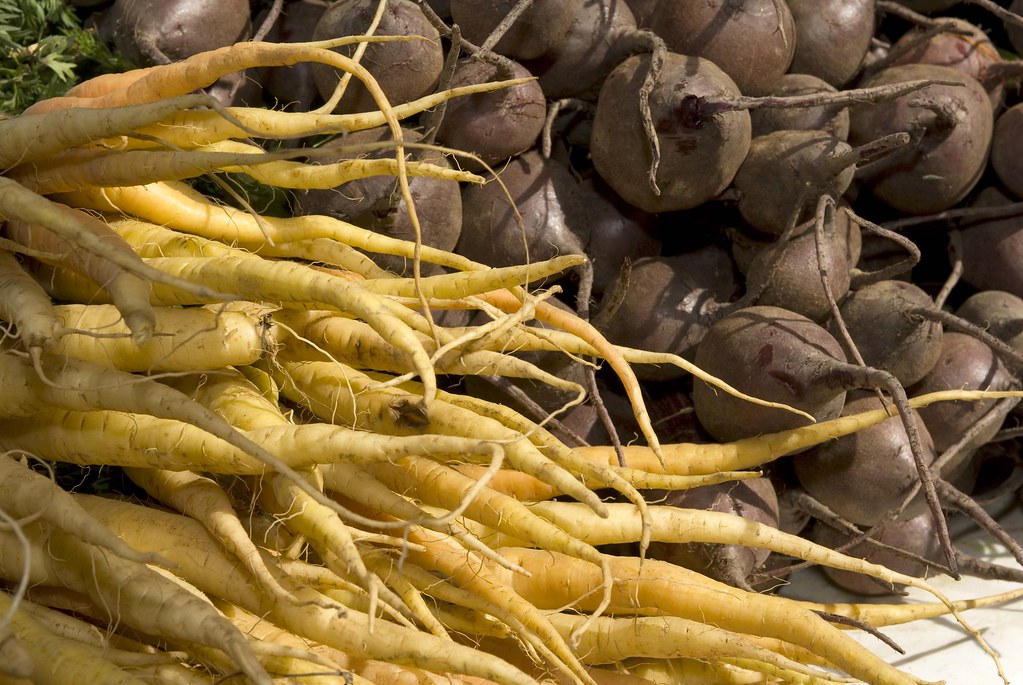 As September rolls in your tomatoes will start looking tired and your summer squashes will be looking the worse for wear. While it is time to pull some things out, the season is far from over. Extending your harvest is fairly simple.
As September rolls in your tomatoes will start looking tired and your summer squashes will be looking the worse for wear. While it is time to pull some things out, the season is far from over. Extending your harvest is fairly simple.
Timing is important. Read the seed packet for the days to maturity and count backward from the first frost date in your area. Remember that the fall is cooler so everything grows more slowly. Your vegetables will be smaller—but small also means tender.
What are some good candidates for planting? Loose-leaf lettuces are ideal for a fall sowing. They love the cool weather and are a fast-growing crop. Wait until the middle or end of August and start sowing them in the garden.
Turnips and beets make superb late-season crops. They are tender when young. Young beet greens are delicious in a salad or steamed.
“Cole crops” (cabbage, kale, kohlrabi, and broccoli) can withstand a light frost. They grow well in the fall and can be planted as a second crop either from seed or transplant in mid-July to late August. By the time these vegetables are maturing, it is nice and cool.
Summer squash and bush beans are prolific. With a single sowing they easily exhaust themselves by mid-summer, so why not try growing more in two separate sowings? Plant a second crop in mid- to late-July for a late-season treat.
Posted in Gardening Tips on August 25 2008, by Sonia Uyterhoeven
Cunning Caryopteris
 Sonia Uyterhoeven is Gardener for Public Education at The New York Botanical Garden.
Sonia Uyterhoeven is Gardener for Public Education at The New York Botanical Garden.
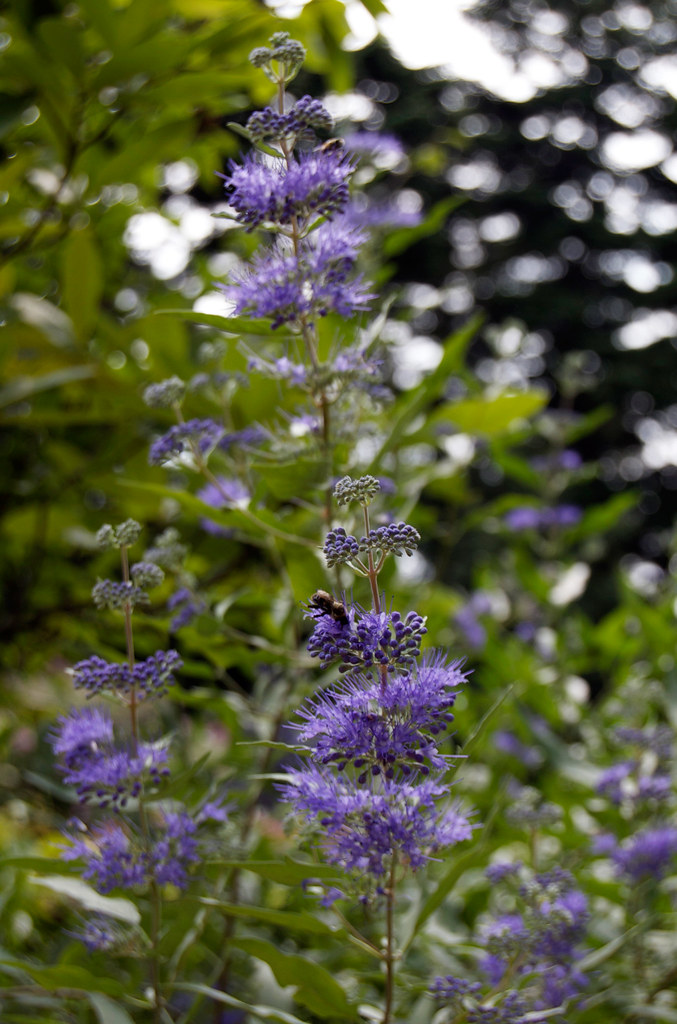 High on my agenda these days is using plants that benefit the environment while also doing the work I need a good plant to do, which is to create a beautiful garden. Caryopteris or blue beard fits this criterion.
High on my agenda these days is using plants that benefit the environment while also doing the work I need a good plant to do, which is to create a beautiful garden. Caryopteris or blue beard fits this criterion.
It is not a particularly needy plant; it doesn’t require copious amounts of fertilizer or water—in fact it likes good drainage and moderate to lean soil.
Caryopteris is a magnet for wildlife: Bees and butterflies cover the flowers while deer show no interest and leave it intact.
Finally, a bonus for the shrub world—it flowers in August, long after most woody plants have finished flowering for the season.
It has a nice open structure that makes it an adaptable companion in any mixed border. In one location we have it snuggling up to a Daphne ‘Carol Mackie’. The graceful blue beard’s loose branches would also spill nicely into any small- to medium-size ornamental grass, making the two a lovely late-season pair.
I cut this shrub back to a one- to two-foot framework in mid-April to keep it flowering freely and to maintain a compact three-to-four-foot fountain of pale-blue to deep-purple flowers for a late season display.
Posted in Gardening Tips on August 18 2008, by Sonia Uyterhoeven
Pondering Powdery Mildew
 Sonia Uyterhoeven is Gardener for Public Education at The New York Botanical Garden.
Sonia Uyterhoeven is Gardener for Public Education at The New York Botanical Garden.
Gardening is about observation. I have noticed over the past several years that my phlox and peonies that are out in full sun never suffer from powdery mildew while those that are in partial shade suffer miserably. What then are the lessons for the gardener?
Powdery mildew tends to create a problem for gardeners in middle to late summer. Unlike many fungal problems that need good moisture to take hold, powdery mildew thrives with warmth (temperatures around 70s-80s) and high humidity.
What can we do to alleviate the problem? Not surprisingly, good maintenance practices and smart gardening is the key to healthy plants.
- Do not overcrowd your plants; this will lead to poor air circulation and will create problems with the humidity level around susceptible plants.
- During the winter the fungus survives on plant debris, so it is important to clean up around infected plants.
- Using high nitrogen fertilizers (the first number on fertilizers) promotes weak, leafy growth; try a balanced fertilizer with low numbers and apply only once in the spring to give perennials a boost for the season.
- Choose disease-resistant cultivars whenever possible.
- Follow the maximum “the right plant for the right place.” A healthy plant is always more resistant to disease problems.
If your favorite perennials do get attacked with powdery mildew, you have several options. When powdery mildew attacks my peonies late in the season, I just cut them back once the leaves get unsightly. If your bee balm has succumbed and is beyond repair, then cut the foliage back; you will get a new flush of foliage but no more flowers for the rest of the season. If it is a late-season bloomer that you’re set on keeping, then remove the worst stems and apply an environmentally friendly product to the rest of the plant as soon as you notice the powdery mildew. Some options include products that contain neem oil, sulfur, or potassium bicarbonate.
Posted in Gardening Tips on August 11 2008, by Sonia Uyterhoeven
Well-behaved Waterlilies
 Sonia Uyterhoeven is Gardener for Public Education at The New York Botanical Garden.
Sonia Uyterhoeven is Gardener for Public Education at The New York Botanical Garden.
 Waterlilies come in all sizes; it is important to find one that suits your location. Waterlilies that are appropriate for a tub garden should be up to 3 feet in diameter; a good size for a small pool is 4 to 6 feet in diameter.
Waterlilies come in all sizes; it is important to find one that suits your location. Waterlilies that are appropriate for a tub garden should be up to 3 feet in diameter; a good size for a small pool is 4 to 6 feet in diameter.
One popular small-sized waterlily for those of us living in Zone 6 is Nymphaea ‘Pygmaea Helvola’. It is a free-flowering waterlily that is well-suited for small ponds and containers, with mottled purplish leaves and bright semi-double yellow flowers. If red is your color, the 3-4 feet Nymphaea ‘James Brydon’ is good for a small pond. Prefer pink? Then you might be looking for Nymphaea ‘Joanne Pring’. Nymphaea ‘Chrysantha’, ‘Colorado’ and ‘Josephine’ are a few more small ones that you will find in our pools in the Enid A. Haupt Conservatory Courtyards.
Plant your waterlilies in an aquatic container (lined with burlap if needed) or a plastic pot. Use top soil to pot them up (potting soils are too light and should be avoided). Cover the container with pebbles or pea gravel and fertilize once a month with aquiform tablets that are pressed into the soil (waterlilies are heavy feeders). Initially, elevate the pot with bricks so that the young plant gets enough light. Six hours of sunlight will keep it blooming prolifically.
Posted in Gardening Tips on August 4 2008, by Sonia Uyterhoeven
The Cutting Garden
 Sonia Uyterhoeven is Gardener for Public Education at The New York Botanical Garden.
Sonia Uyterhoeven is Gardener for Public Education at The New York Botanical Garden.
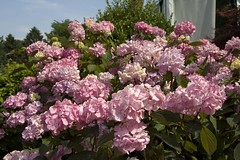
Cut flowers can transform your home in the summer, and many flowers are easy to grow in the garden. When designing your garden, plan for flowering shrubs such as lilacs, hydrangeas, and viburnums; grasses; and foliage plants such as hostas, Rex Begonias, and ferns.
The basic rules of thumb for cutting flowers from the garden are as follows:
- Cut early in the morning when the stems are nice and turgid; as the day heats up they start to dehydrate.
- Use sharp tools that will make a clean cut.
- Cut an inch from the bottom of the stem at a 45-degree angle, providing more surface area.
- Place the cuttings in a bucket of water immediately, otherwise the stems will seal up and inhibit absorption.
- Remove all foliage that is under water to prevent decay and bacterial growth, which shortens the flower’s vase life.
- Use lukewarm water unless you are arranging early season bulbs, which prefer cool water.
- Use flower food to increase the longevity of the arrangement. For a homemade version, mix together 1 teaspoon each of sugar, household bleach, and lemon juice.
- For flowers that grow on individual stems such as zinnias, dahlias, and sunflowers cut when the flower is open.
- For flowers that have multiple buds, use stems with a few buds open and others starting to show color. Snapdragons, delphiniums, phlox, and lilacs are some examples.
Posted in Gardening Tips on July 28 2008, by Sonia Uyterhoeven
Lepidopterist Delight
 Sonia Uyterhoeven is Gardener for Public Education at The New York Botanical Garden.
Sonia Uyterhoeven is Gardener for Public Education at The New York Botanical Garden.
 Butterflies delight us with a kaleidoscope of color. They are wonderful for educating children about nature, keeping us connected with the natural world, and giving us a deeper appreciation for insects in general.
Butterflies delight us with a kaleidoscope of color. They are wonderful for educating children about nature, keeping us connected with the natural world, and giving us a deeper appreciation for insects in general.
Butterflies are also second to bees are our most important plant pollinator. They are sensitive to the environment and so are good indicators of the health of the environment. How then can we encourage them into our garden?
Butterflies need sunny, open spots that are protected from heavy winds. They need a sunning area such as a rock, a path, or pavement, where they can sit and warm up (insects are cold blooded). Just like birds need a bird bath for water, butterflies need puddles or a pool of water where they can get moisture and minerals. The garden should be free of pesticides.
To draw butterflies into your yard, provide plants that are a good source of nectar such as butterfly bush, lilacs, lavender, bee balm, ornamental sage (salvia), cosmos, zinnias, coneflowers, and asters, to name a few.
Also remember to provide food sources for hungry caterpillars that will eventually be transformed—through metamorphosis—into the stately butterfly. Host plants include fennel, parsley, violets, blueberry bushes, dogwoods, viburnums, cherries, and maples.
 Sonia Uyterhoeven is Gardener for Public Education at The New York Botanical Garden.
Sonia Uyterhoeven is Gardener for Public Education at The New York Botanical Garden. From time to time, some of your perennials will start to languish. It’s not the heat or a lack of moisture that is the cause. Sometimes they just outgrow their space, start to sprawl all over the place, and slowly die out in the middle. When this happens, it is time to divide your perennials.
From time to time, some of your perennials will start to languish. It’s not the heat or a lack of moisture that is the cause. Sometimes they just outgrow their space, start to sprawl all over the place, and slowly die out in the middle. When this happens, it is time to divide your perennials.







